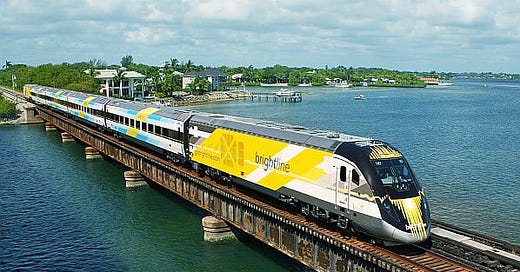The California High-Speed Rail project is not a good thing.
It may have been (and probably still is) a good idea, but it has transformed into a decade-long debacle plagued by preposterous government rules about land acquisition, budget overruns and construction delays.
I think it’s safe to say that the project's slow progress and ballooning costs have raised serious questions about its feasibility and the effectiveness of the current ability to build problem solving mass transport.
Mass transport is incredibly important, as detailed in the passage below from a recent NBER working paper:
We quantify the aggregate, regional and sectoral impacts of transportation productivity growth on the US economy over the period 1947-2017. Using a multi-region, multi-sector model that explicitly captures produced transportation services as a key input to interregional trade, we find that the calibrated change in transportation productivity had a sizable impact on aggregate welfare, magnified by a factor of 2.3 compared to its sectoral share in GDP. The amplification mechanism results from the complementarity between transport services and tradable goods, interacting with sectoral and spatial linkages. The geographical implications are highly uneven, with the West and Southwest benefiting the most from market access improvements while the Northeast experiences a decline. Sectoral impacts are largest in transportation-intensive activities like agriculture, mining and heavy manufacturing. Our results demonstrate the outsized and heterogeneous impact of the transportation sector in shaping US economic activity through specialization and spatial transformation.
Enter Brightline, a privately funded and operated intercity rail service that is rapidly transforming the landscape of passenger rail travel in the United States.
Brightline is today’s good thing.
In stark contrast to the California High-Speed Rail, Brightline has achieved remarkable success in a relatively short timeframe. It’s already up and running (albeit at a little bit of a high per-trip cost) and demonstrates something we love at this Substack, the potential of public-private partnerships.
Keep reading with a 7-day free trial
Subscribe to One Good Thing to keep reading this post and get 7 days of free access to the full post archives.




